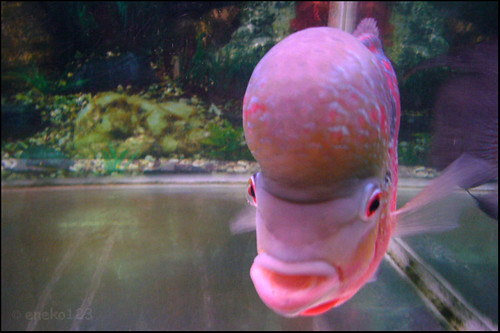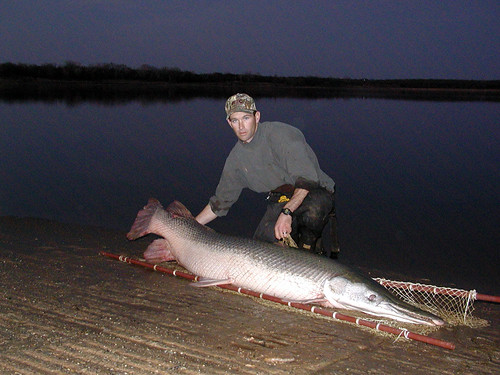
| Trout and all fish select-or reject-a fly based on the three basic "S's": size, shape and color spectrum. The best fly size matches the local food sources and shapes as accurately as possible. For the color spectrum, your fly should look like other naturally occurring food sources as it reflects natural light waves in the water-or while sitting on top of the water. The fish will let you know when you have made a good fly selection and perfect presentation.
What's the perfect fly? The one that a trout takes. This is why you should buy many types and several sizes of each, and take them with you. Many factors play into letting the fish be your judge in what you tie on and cast. Water conditions, temperature of air and water, and other factors can change by the hour on a trout stream, and so will the fishes feeding preferences-and so should your flies.
Know Your Trout
Trout are well known for being opportunistic feeders with voracious appetites. In most cases anything that falls into or on top of the water and that can be fit inside of a trout's mouth is subject to becoming trout food-period.
On the other side of the feeding coin, however, are the facts that trout have keen vision and often have super-selective feeding preferences. Flies and lures that are presented to a feeding trout must frequently follow a near-perfect match to the natural food sources the local trout are feeding on while you are casting. The crystal-clear water where trout prefer to live acts a magnifying glass to help a trout inspect your fly as it sits on top of the water or as it washes by in a current.
When viewed from below, trout see dark patterns of winged insects passing overhead against a light, nearly mirror-like background. The correct size and shape of silhouette is very important to inciting a trout to strike. If you are fishing a dry fly, keep this in mind.
To effectively pursue trout with flies, you should gain an understanding of their underwater world. Most trout lie facing upstream and nearly 90 percent of the food that a trout consumes is taken while the entire fish remains underwater-this translates into nymph and emerger patterns. For a fish to survive and grow, the energy gained from consumption must be greater than the energy required consuming it or the fish will perish. This is a basic principle of trout survival. The size of the fish can also determine what it eats. A small fish possibly cannot consume another fish or minnow, but a large fish might forgo insects to eat a small fish-or fly imitation of a small fish-and other foods like crayfish, leeches and worms.

| Know Your Water
Before you go fishing, consult local hatch charts or visit with local fishing tackle shops, such as the ones found in the many Cabela's stores. Most stores have bulletin boards with details about local hatches-and the flies they recommend to imitate the naturals-along with water condition reports. You might also consider buying flies from this source since local patterns can vary-in size, shape and on the color spectrum-and these shops stay in business by selling flies and giving sound advice that results in total angler satisfaction.
Once you are streamside, you should pause and observe the water before making your first cast. Do you see fish rising and feeding? If so, are they feeding on a fly you can see or something just under the surface? If you spot bubbles when a trout leaves rings after feeding, this means the food was plucked from the surface and the fish released the excess air before it descended. If there are no air bubbles with the noticeable rings, then the food was emerging and captured just under the surface. If you spot mayflies or insects riding on the surface, try to capture one and take a close look at it. Here's where a magnifying glass in your vest will come in handy to help your observe the fine details of graceful mayfly or other insect. You can also check bushes along the stream and watch birds to see if insects are present.
If you do not see insects or signs of feeding fish-including fins and tails protruding from the water-then the action is subsurface. You might try using a seine and turning over rocks-plus check sandbars and woody debris-to determine any possible trout food sources. To entice a trout to accept your lures now, you'll be fishing subsurface flies-nymphs, wet flies, and streamers-and color is critical. You are working to gain a trout's attention and solicit a strike in a watery world where everything is in constant motion. In recent years more nymph patterns have begun sporting flashy gold or copper beadheads. Flashiboo, antron and other sparkling materials have also helped tiers create flies that put more shimmering colors-and attraction-before a fish's eyes. A tiny sparkle can work wonders to catch a fish's attention.
The best answer to the question of what local trout are feeding on-and what fly you should use-also involves an understanding of local insects and stream life during the period when you are fishing. In early spring just after snowmelt, midges appear in many waters and freshwater shrimp become active. As the daytime air temperatures warm and more sunlight penetrates and warms the water, mayflies often begin to emerge-and stunning blue wing olives are often the first to take to the air. As warmer summer days sweep the land, grasshoppers, crickets, beetles, wasps, bees, inch worms, ladybugs, caterpillars, moths, earthworms, dragonflies, and ants begin falling into the waters. Small birds, mice, crayfish, frogs, minnows, and huge stoneflies also become prey for larger trout as summer advances. Smaller trout can also become the target of other trout at almost any time.
You'll find more than 500 fly patterns in the Cabela's Fly Fishing catalog that imitate almost all of these important foods. All flies shown in the catalog are presented in a close-up view to aid you with your selection choices.

| Know Your Foods
The flies that you should pack and cast are now limited only by the region's insects, crustaceans, fishes, reptiles, mammals and other natural food sources. Again, it's important to try to mimic the size, color spectrum and shape with any fly you cast. Does the fly look natural and resemble a local insect or food source?
And when it comes to insects, there are many types of mayflies and other options that begin their life underwater as a nymph or worm. Two types of aquatic insects are most prominent in North America-caddis and mayflies.
The mayfly-there are actually hundreds of types of this species-all begin life as eggs and then become multi-legged clingy nymphs that can walk and crawl along on slippery underwater rocks. If they loose their grip, they'll wash down stream-tumbling free fall-and possibly end up in the mouth of a trout. After a year or two of living on the bottom, a mayfly nymph swims to the surface and sheds its skin as an emerger. The new adult version-a dun-resembles a miniature sailboat with graceful wings or sails. Duns are very vulnerable to attacks from hungry trout at this stage as they helplessly drift downstream.
When duns dry, they become airborne, head for vegetation, and then shed their skin a second time to become a complete adult mayfly. Adult mayflies dance into the air in swarms and mate. The female frequently returns to the water to deposit eggs and might take flight again-if a trout does not grab her. Adult mayflies eventually drop to the water surface and die with wings outstretched-the spinner phase. Most mayflies are yellow, gray, brown, or olive-note these important colors. Each step of the insect life-cycle presents an option for you to exploit and Cabela's offers a fly to help you make an enticing-and fish catching-presentation. |


































